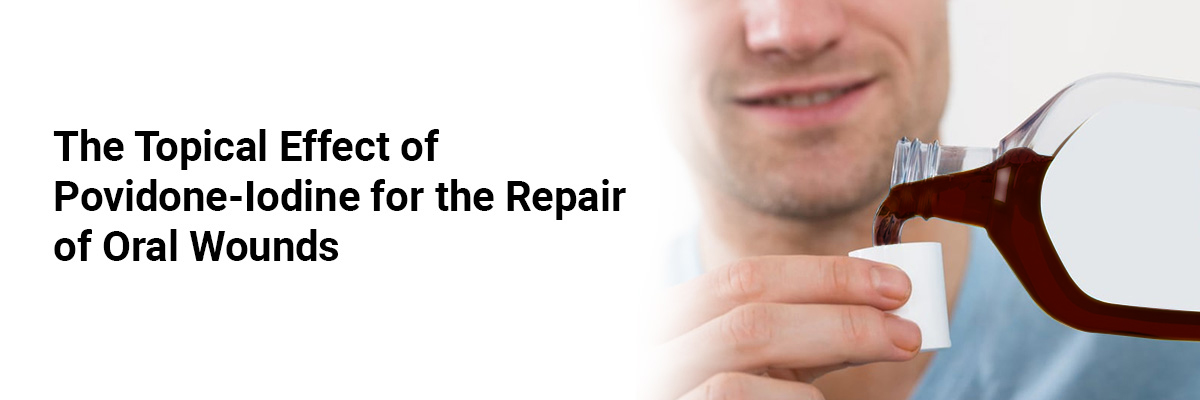

The Topical Effect of Povidone-Iodine for the Repair of Oral Wounds
The oral mucosa is subject to constant physical and chemical insults, resulting in the development of ulcerated lesions that are prone to infection, potentially hindering the healing process.
This study conducted an extensive review of both medical and dental literature to explore the application of povidone-iodine in the treatment of oral wounds. The findings revealed that povidone-iodine can effectively control local infection in a concentration-dependent manner, positively influencing the tissue repair process. Consequently, oral antiseptics emerge as a favorable option for managing oral lesions, offering the advantage of minimal risk associated with systemic toxicity and allergies, along with limited clinical evidence of bacterial resistance.
Source: da SilveiraTeixeira D, de Figueiredo MAZ, Cherubini K, de Oliveira SD, Salum FG. The topical effect of chlorhexidine and povidone-iodine in the repair of oral wounds. A review. Stomatologija. 2019;21(2):35-41. PMID: 32108654.
Related FAQs
The Effectiveness of Low-Concentration Povidone-Iodine as Irrigant for Reducing Postoperative Complications after Third-molar Surgery
Effectiveness of Povidone-Iodine at various concentration as an Adjunct to Scaling and Root Planning in Managing Peri-Implant Mucositis
Evaluating the Antiviral Properties of Povidone-Iodine in Oral Healthcare
Efficacy of Povidone-Iodine Vs. benzydamine hydrochloride in Preventing Severe Radiation-Induced Oral Mucositis in Head and Neck Cancer Patients Undergoing Concurrent Chemoradiotherapy
Comparative Evaluation of Betadine (Povidone-Iodine), Chlorhexidine (CHX), and Normal Saline in Tooth Extraction: A Study on Dry Socket Incidence and Infection Control
Practical use of povidone‐iodine antiseptic gargle in the prevention and treatment of common oropharyngeal infections
15 Seconds to Safety: PVP-I's Virucidal Efficacy
PVP-I Gargles: A Promising Antiseptic Shield against Whooping Cough
Povidone-iodine gargle prevents respiratory infections

